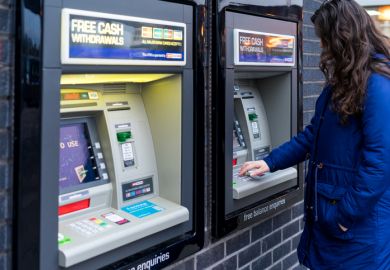More than one in six 18-year-old university applicants from England, Wales and Northern Ireland now receives at least one unconditional offer, triggering fears that growing numbers of students who accept such offers are being “deterred from reaching their full potential”.
Ucas’ End of Cycle Report 2017, published on 14 December, reports a 40.2 per cent year-on-year increase in the number of unconditional offers received by school-leavers in the three countries. This cohort received 51,615 unconditional offers in 2017, up from 36,825 the year before, and just 2,985 in 2013.
The rapid increase means that 17.5 per cent of school-leavers from the three countries now receive at least one unconditional offer, proportionally a 16-fold increase over four years.
Institutions that advertise their unconditional offer schemes include members of the prestigious Russell Group, including the University of Birmingham and Queen Mary University of London.
Mike Nicholson, director of student recruitment and admissions at the University of Bath, said it was “a reflection of the increased competition in undergraduate recruitment and admissions that some universities are increasingly relying on unconditional offers as a route to secure their student numbers”.
The Ucas data show that there is a strong likelihood that unconditional offers will be taken up by applicants: of the 51,615 made this year, 29,980 became students’ “firm” choices, and 8,240 were used as insurance choices.
But Mr Nicholson pointed to previous Ucas research which found that applicants holding unconditional offers were 23 per cent more likely to fall short of their predicted grades in their final school exams than students with conditional offers.
“This confirms what teachers have been saying for some time; the receipt of an unconditional offer demotivates many students and deters them from reaching their full potential,” Mr Nicholson said. “This has implications later in life as many graduate employers still use A-level performance when shortlisting for internships, placements and graduate entry schemes.”
The Ucas figures are thought to underestimate the use of unconditional offers, since some offers are only made unconditional once a student has chosen a university as their firm choice.
But what is clear is that the trend is being driven by a relatively small group of providers: at 62 institutions, unconditional offers represented less than 1 per cent of all offers, but they accounted for between 10 and 20 per cent of offers at 20 institutions and, at 13 providers, at least one in five offers made was unconditional.
And, as the use of unconditional offers has increased, the profile of the students receiving them has evolved. Historically, students with the highest predicted grades were most likely to get an unconditional offer, but they are now among the least likely to, and instead applicants predicted to get ABB to BBC stand the highest chance of getting one: more than one in five applicants in this group received an unconditional offer in 2017.
Clare Marchant, Ucas’ chief executive, emphasised that unconditional offers still accounted for only 5.3 per cent of all offers made to 18-year-olds in England, Wales and Northern Ireland, despite the rapid growth.
“[Unconditional offers] have an appropriate place but we need to make sure we don’t adversely affect 17- and 18-year-old attainment by using a method like this,” she said, explaining that grades were “something we need to keep an eye on”.
The Ucas data show that the gap in higher education enrolment between the most privileged and most disadvantaged English 18-year-olds has been unmoved since 2014, with the most advantaged students remaining 3.8 times more likely to enrol. However, at the most selective institutions, the gap continues to narrow.
White English 18-year-olds remain less likely to enter higher education than classmates of other ethnicities, and have fallen further behind; while, across the UK, 18-year-old women are still 36 per cent more likely to enrol than men.
Register to continue
Why register?
- Registration is free and only takes a moment
- Once registered, you can read 3 articles a month
- Sign up for our newsletter
Subscribe
Or subscribe for unlimited access to:
- Unlimited access to news, views, insights & reviews
- Digital editions
- Digital access to THE’s university and college rankings analysis
Already registered or a current subscriber?








